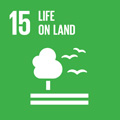- Docente: Federico Lucchi
- Credits: 6
- SSD: GEO/08
- Language: Italian
- Moduli: Federico Lucchi (Modulo 1) Matteo Roverato (Modulo 2)
- Teaching Mode: Blended Learning (Modulo 1) Traditional lectures (Modulo 2)
- Campus: Bologna
- Corso: First cycle degree programme (L) in Geological Sciences (cod. 8015)
-
from Feb 20, 2025 to Apr 08, 2025
-
from Apr 09, 2025 to May 22, 2025
Learning outcomes
At the end of the course, the student has acquired the ability to carry out a geological study of a volcanic area in order to interpret the processes that control where and how volcanic eruptions occur. Multidisciplinary skills are provided that bring together aspects of geology, sedimentology and volcano-tectonics, petrology and physics (i.e. fluid dynamics) in order to understand how to define the eruptive dynamics, transport and emplacement mechanisms of volcanogenic flows, and the processes of erosion and post-depositional alteration of volcanic deposits, based on the study of volcanic successions and morphologies and volcano-tectonic collapses. In particular, the student is able to obtain the main eruptive parameters and define the temporal development of eruptive activity in recent and/or ancient volcanoes and the recurrence of eruptions for the purposes of volcanic hazard assessment.
Course contents
The course is organized into different sections aimed at providing the tools necessary for the study of the main eruptive processes and the corresponding volcanic and collapse morphologies, and the eruptive parameters obtained from the quantification of geological characteristics of volcanic deposits, with particular reference to volcanic hazard assessment, georesources and territorial planning. The main topics that will be covered are the following. General characteristics of volcanism and physico-chemical properties of magmas. Petrological and geophysical methods for the definition of the structure of a volcanic edifice and the localization of magma chambers. Relationships between local and regional volcanic and tectonic activity, and identification of dykes and volcanic conduits. Recognition of volcanic collapse structures (calderas and sector collapses) and feedback mechanisms between collapses and volcanic activity. Characterization of eruptive processes. Characteristics and flow dynamics of mafic lava flows (Pahoehoe and aa) and definition of the maximum distance travelled. Characteristics and flow dynamics of silicic lavas (block flows, coulees, volcanic domes), their fracturing dynamics and secondary explosive activity. Eruption column and fall deposits; definition of the isopach map and quantification of the volume (DRE) of an eruption; definition of the isopleth map and quantification of the height of the eruption column and the intensity of an eruption; definition of the critical mass load of a fall deposit. Distribution area of ballistic clasts. Pyroclastic density currents and related deposits; definition of the distribution area; quantification of temperature, velocity and density of a pyroclastic current, and estimation of the dynamic pressure based on the corresponding deposits. Sub-surface structure of the calderas and distribution of associated deposits. Area of distribution of debris avalanche flows and syn- and post-eruptive lahars.
Responsible teacher: Prof. Federico Lucchi
Collaborating teacher: Dr. Matteo Roverato
The course is organized into 24 hours of lectures (3 CFU) + 10 hours of exercises (1 CFU) + 24 hours of field laboratory (2 CFU), for a total of 58 hours of teaching activity
A part of the course will be dedicated to a flipped learning exercise during which the teachers will propose case studies that the students, in small groups, will have to analyze and study, identifying specific aspects and possible interpretations, and then presenting what to the rest of the teachers in the class. he achieved, discussing the main aspects together with the other students and teachers.
The course includes one or more field excursions in Italian volcanic areas aimed at putting into practice the concepts acquired during the lectures
Readings/Bibliography
Power Point presentations
• M.J. Branney, P. Kokelaar, 2002. Pyroclastic density currents and the sedimentation of ignimbrites. Geological Society of London, Memoirs 27.
• H. Sigurdsson (Ed.), 2015. Encyclopedia of Volcanoes. Accademic press, San Diego, U.S.A.
Teaching methods
PowerPoint presentations
Student presentations with discussion on topics of the course or on scientific publications of interest. This activity follows the guidelines of innovative blended teaching.
A field laboratory is planned to verify the learning of theoretical concepts.
In consideration of the types of activities and teaching methods adopted, attendance of this training activity requires all students to carry out the modules 1 and 2 about safety in e-learning mode [https://www.unibo.it/it/servizi-e -opportunities/health-and-assistance/health-and-safety/safety-and-health-in-places-of-study-and-internship] and participation in module 3 of specific training on safety and health in places of study. Information on the dates and methods of attendance of module 3 can be found in the specific section of the study course website.
Assessment methods
Oral or written exam (under agreement with the teachers)
Teaching tools
PPT presentations
Scientific publications
Rock samples
Geological maps
Office hours
See the website of Federico Lucchi
See the website of Matteo Roverato
SDGs



This teaching activity contributes to the achievement of the Sustainable Development Goals of the UN 2030 Agenda.
